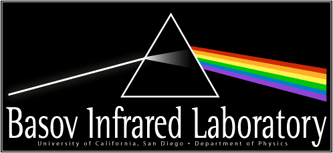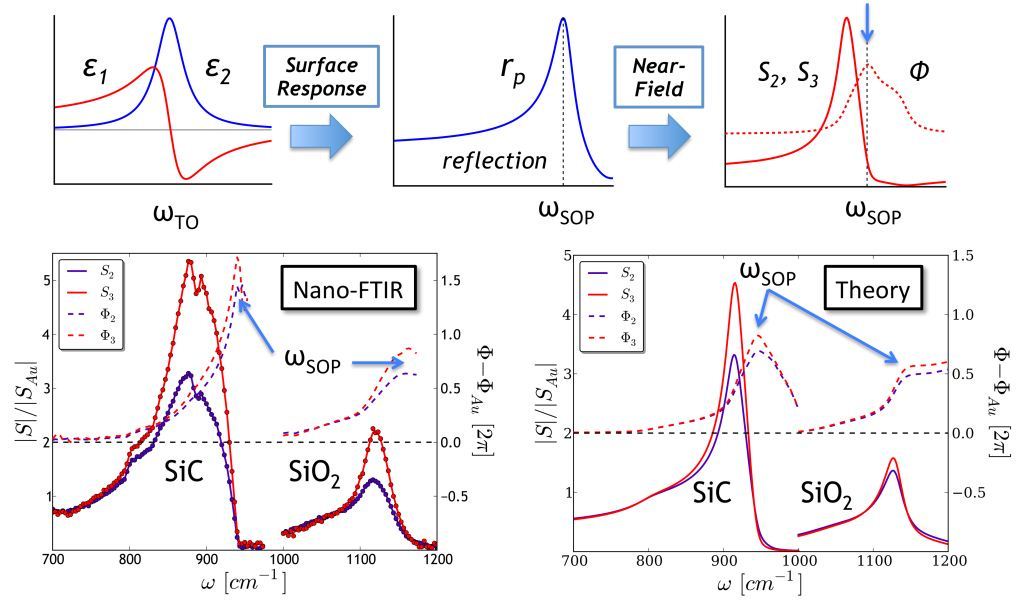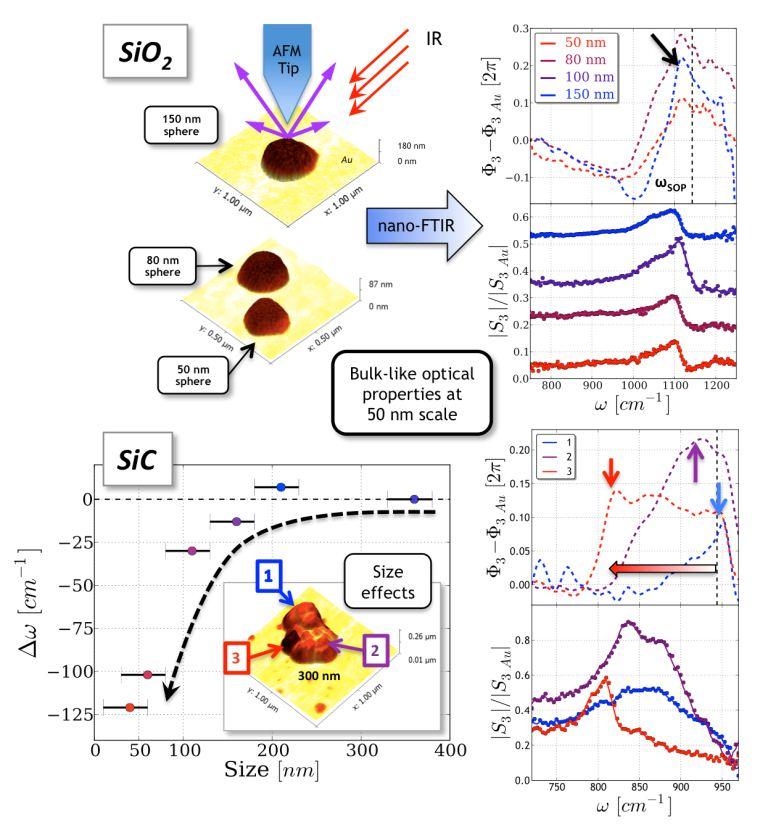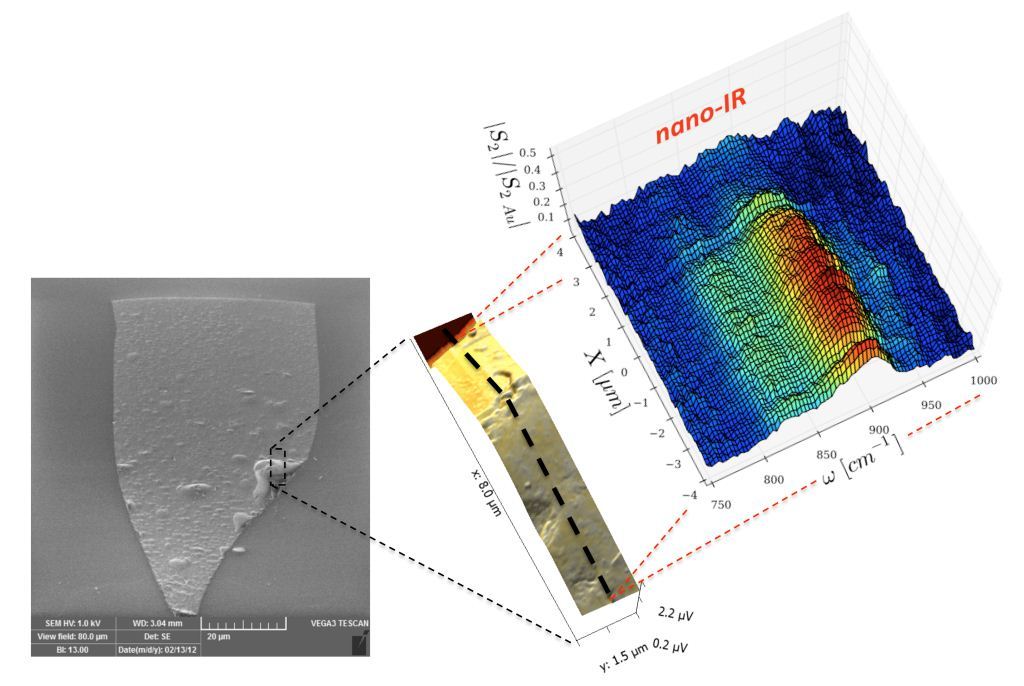| Infrared Nano-Optics of Quantum Materials | |||
|---|---|---|---|
|
|
Infrared Nano-Spectroscopy of Extraterrestrial MaterialsNear-field spectroscopy is a technique uniquely suited to non-destructive chemical identification of the sub-micron regions and chemical phases found in heterogeneous natural samples, such as those returned to Earth from the dust cloud surrounding Comet 81P/Wild 2 by NASA's Stardust Discovery Mission spacecraft after its 2004 flyby. These returned extraterrestrial samples provide tangible access to the composition of matter in the early solar system, as well as glimpses of organic materials and rare pre-solar stardust grains. While the spatially-resolved study of these materials traditionally has relied on the sub-diffraction resolving power of electron- and X-ray microscopies, these techniques are invariably destructive to valuable samples, to the preclusion of follow-up investigations. In contrast, near-field infrared spectroscopy combines the non-destructive imaging capabilities of atomic force microscopy (AFM) and near-field microscopy with Fourier-transform infrared spectroscopy (FTIR), enabling spectroscopic identification of materials and mineral structures at the scale of tens of nanometers. Our broadband mid-infrared laser source provides signal levels sufficient for rapid point- and linescan-spectroscopic studies of delicate sub-micron samples, across a frequency range relevant to phonon-assisted fingerprinting of local chemical composition. The theoretical, systematic, and in-situ near-field studies being performed in the Basov lab constitute the next generation of sub-diffraction infrared spectroscopies, as we apply them to examine the remnants of our early solar system.
Top panels: The theory of near-field infrared phonon spectroscopy (nano-IR) is based upon an understanding of how the local dielectric properties of materials determine the spectrum of allowed surface modes (e.g. surface optical phonons), and how these modes are detected via interactions with a near-field probe through the amplitude and phase of back-scattered radiation. Bottom panels: Nano-IR spectra of phonon-resonant materials silicon carbide and silicon dioxide in comparison with basic theoretical predictions.
Top left: A metallized IR-illuminated AFM tip serves as a near-field probe for the dielectric properties of silicon dioxide nanoparticles. Top right: The silicon dioxide surface phonon is detected in the amplitude and phase of back-scattered radiation. The phonon frequency red-shifts slightly due to the spherical geometry. Bottom right: Nano-IR exhibits reveals phonon red-shifts among silicon carbide crystallites due to surface strain or dispersive phonon confinement. Bottom left: Confinement- and strain-induced red-shift correlates inversely with crystallite size.
Left: SEM micrograph of a typical extraterrestrial mineral grain, composed of olivine silicate. Left: AFM topography of a surface feature, and nano-IR spectra acquired from a linescan along the dashed path. Several phonon peaks are revealed in the back-scattered near-field signal, resolving typical strain- and composition-induced shifts in phonon frequency as small as 0.5%, owing to the spectral resolution afforded by traditional Fourier transform infrared spectroscopy applied at the nano-scale (nano-FTIR). [1]. G. Dominguez, A.S. Mcleod, Z. Gainsforth, P. Kelly, H.A. Bechtel, F. Keilmann, A. Westphal, M. Thiemens, and D. N. Basov Nat. Commun. 5, 5445 (2014) |
||
t |
|||
 |
|||


